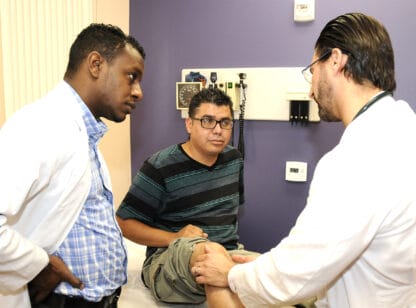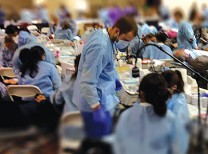
On May 22 of this year, in the Gansu province of China, 21 ultra-marathoners got caught in a freak storm that took many by surprise. These runners, who were at the top of their field, were pelted with rain and hail and experienced freezing temperatures while being swept up and over cliffs by wind that knocked them off their feet. Most of the runners were wearing t-shirts and shorts. One runner wrapped himself in a foil blanket, blacked out and was rescued by a local sheepherder who took the athlete to a cave stocked with quilts and firewood.
After reading the story of the rescued survivor, I reflected on the dichotomy between a seasoned, fit athlete and a sheepherder, who was quite possibly an elder of the mountains and in no way familiar with running 60 miles in one day. We all find ourselves feeling strong at moments, as if we are on top of the world, and then in one fell swoop, suddenly can feel fragile and in need of assistance.
When it comes to outdoor activity, we must be prepared regardless of our training and conditioning. Taking steps to be aware of our environment and knowing what supplies to have at hand can mean the difference between ease and distress. A striking reality of the tragedy in China was the proficiency of the runners who lost their lives and the avoidable oversight in preparation.
For any desert dweller who ventures out for hiking or other outdoor sports, the following items can make the difference between an enjoyable or a potentially dangerous experience:
- Bring a bandana. Soaking a bandana in cool water and placing it around your neck or head will offer cooling.
- Dress in moisture-wicking clothing, which cools the body better than cotton.
- Wear a hat with a wide brim to protect against UV rays.
- Wear sunglasses that provide both 99 to 100 percent UVA and UVB protection to minimize any forms of eye damage.
- Apply waterproof sun protection of SPF 30 or higher a half an hour before going outdoors and then reapply continuously to help protect your skin.
- Drink one quart of water per hour during exercise, and consciously drink more for two days leading up to intense exercise. Prior to exercise, omit alcohol and coffee.
- Have an easy-to-reach water strategy for continuous sipping. If a headache sets in, recognize this is a possible sign of heat exhaustion or heat stroke; seek rest with shade and electrolytes.
- Pack calorie-dense foods for quick fuel, such as trail mix and almond butter.
- Wear proper shoes with appropriate traction, support and protection. Our feet support everything we do!
- Pack first aid essentials such as ibuprofen, moleskin, a pair of tweezers and electrolyte tabs that can be popped under the tongue for a quick pick me up of fast-acting minerals. These items can make a big difference.
You can apply these tips to many activities. As a fitness director, I occasionally witness pickleball miss-steps where an improved choice of shoes could have prevented an injury; while hiking, I often see people on the trail with no water or improper shoes. If we take the time to notice nature’s desert dwellers, we will see that every animal and plant has adaptations. We, as well, need to be anticipatory toward our environment to ensure our optimal well-being.
Jennifer Di Francesco is a wellness explorer and desert adventurist and can be reached at www.coachellabellaboho.com.

















































Comments (0)